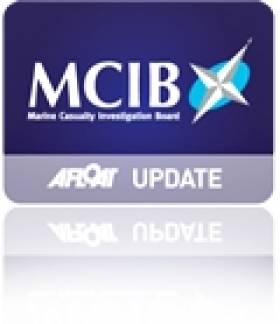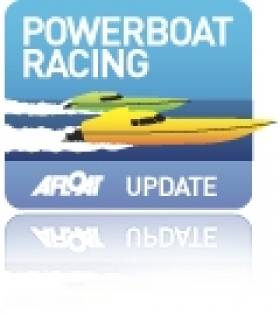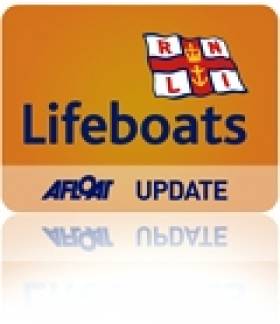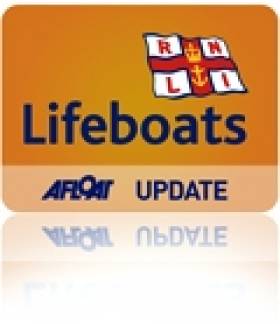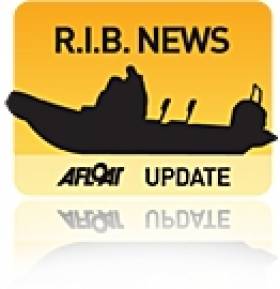Displaying items by tag: Rib
#motorboatweekend – In spite of the squalls and rain showers crossing county Kerry for most of the Bank holiday weekend, Dromquinna Manor's annual Motor Boat Weekend drew a fleet of up to a dozen RIBs for what is the mostern westerly RIB rally in Europe. Tucked snugly on the hotel dock, (pictured above) crews enjoyed some Dromquinna hospitality at the nearby Boat House on Saturday afternoon.
Activities over the weekend were based around a number of adventure challenges (including a run out to the Bull Rock lighthouse) from an impressive display of high specification Irish RIBs.
The fleet included several top of the range Red Bay RIB's, one with an 8.4m inboard diesel and canvas cabin. Another four seater 7.4m Red Bay was fitted with a 300hp Suzuki outboard. There were also two impressive Tornados, a diesel inboard version from Excalibur from Cork plus two more eight metre Ribcraft vessels along with some smaller Zodiacs.
Trinity House, the elegant UK working home of the General Lighthouse Authority opposite the historic Tower of London on Tower Hill, has teamed up with caterers and the powerboat charter company, Solent Rib Charter, to offer bookers an exciting senior corporate management team building package incorporating a light breakfast followed by a thrilling 'Thames Rib Blast' on the River. The Ribs can accommodate up to eight guests per boat and while the duration of the ride is flexible, most opt for a two-hour 'Blast' through Central London and/or to the Thames Barrier and back. Participants then return to the House for a first-rate champagne lunch catered by palette. Delegates will be welcome to leave personal items/luggage at the House while on the River.
The 'Blast' package is charged at a (non-negotiable) £1,988 + VAT (i.e. £248.50 per person at full capacity) per boat and includes exclusive venue hire and the two - three hour Thames River 'Blast' (irrespective of final numbers). The breakfast and post-Blast lunch is charged separately starting from an additional £167 + VAT per person for a minimum of eight participants. (Fewer numbers can be catered for a slightly increased charge).
Following a light continental breakfast, participants make the short walk to St. Katherine's Dock passing the moat of the Tower of London where the memorial Poppies were so spectacularly displayed. After donning protective clothing - guests are provided with breathable oilskins for warmth - guests will embark on a Rib for a morning of high-speed thrills (but no spills) zipping past some of the City's most famous river-side buildings such as the Houses of Parliament, London Eye, The Shard, and Old Billingsgate etc. The Ribs operate in even the most choppy and chilly conditions and can be seen on the River all year round. A celebratory lunch comprising seasonal items (such as Basil Panna Cotta to start followed by Gressingham Duck Breast as a main with Elderflower Tart for dessert) with accompanying wines and/or champagnes served by uniformed staff will be waiting the triumphant team on return to the House, rounding off an unforgettable half day on the Thames.
All bookings are subject to availability and general booking terms and conditions of Trinity House, Solent Rib Charters, and Palette.
Excessive Speed, Poor Visibility To Blame For Lough Ree RIB Collision - MCIB Report
#MCIB - Excessive speed and poor visibility were the biggest contributing factors in a RIB crash incident on Lough Ree two years ago, according to accident investigators.
One passenger sustained head injuries when the RIB, with a helmsman and three passengers on board, collided with the centre support polars of the Athlone Railway Bridge, close to the Westmeath town's marina, on the evening of 14 July 2012.
Though the injured passenger required a transfer to Beaumont Hospital in Dublin after losing consciousness, all four people on the RIB were later released from hospital.
The RIB itself, however, was damaged beyond repair, says the Marine Casualty Investigation Board (MCIB) report into the incident, which also detailed that the nature of the damage caused was consistent with a RIB accelerating at a speed greater than 15 knots.
This was in spite of speed limits of the Shannon Navigation set at no more than 5kmph within 200m of any bridge, quay, jetty or wharf, when in a harbour area or within 100 of any moored vessel.
It was also determined that was the collision occurred around sunset, "it is likely that the light conditions would not have been good".
The full MCIB report into the Lough Ree incident is available to download below.
North Shannon Team Wins Powerboat RIB Challenge
#powerboatchallenge – The winning Team of the ISA Powerboat Challenge 2014 at Lough Ree Yacht Club went to North Shannon Powerboat School. The school entered two teams in to the challenge with nick names of "Leitrim" and "Roscommon" and the Roscommon gang came up trumps with a 3.5 point lead on 24th Galway Sea Scouts, who had previously won the past two years. Home team Lough Ree Yacht Club came in at a close third place.
28 entrants in 7 teams were at the ISA National Powerboat Championship at Lough Ree Yacht Club on Saturday 1st November. Teams arrived from Irish Sailing Association clubs and training centres in Roscommon, Galway, Wicklow, Leitrim, Bray to compete against a home team from Lough Ree in a challenge of powerboat safety boat skills. There were no high speed manoeuvres on the agenda for the day, just boat control challenges in circumstances experienced in sailing schools and clubs on a daily basis. All a bit like a driving test afloat, but with a team and against the elements.
Challenges for each team were General Boat Handling, Coming Along Side, Picking Up a Mooring, Right an Inverted Dinghy (with no crew) and Lee Shore Landing. Conditions deteriorated as the day continued, with heavy rain and cold winds adding an extra edge to the tasks for all teams, but spirits didn't dampen though and each team rose the challenge. Judges were not only looking at the skills and techniques of their manoeuvres, but also communication and overall team work, so a helm may have performed a manoeuvre perfectly, but poor team communication would reflect in their total score, because to be a truly competent powerboater you need to communicate well with your crew.
Dennis Dillon was the creator of the Powerboat Challenge in 2009 (originally known as the ISA Rib Challenge) and came down to lend a hand on the day, he commented "What stood out most of all is the involvement of the youth and their dedication in this year's challenge. They had trained and their powerboat control skills were excellent." Each team must have two youths aged between 12 and 17 and they are an integral part of the team working as helm, as well as crew. The overall aim of the challenge is to embody the knowledge of safe use of powerboats to young drivers.
A new award of Best Lady Powerboater was presented this year to Linda Laird of North Shannon Powerboat School (Leitrim) and Best Overall Powerboater was presented to Stan Bradbury of Lough Ree Yacht Club, and the local RNLI, for his exceptional communication, coaching and team work.
Full final results are as follows
North Shannon Powerboat School Team 1 Roscommon 82 points
Galway Sea Scouts 78.5 points
Lough Ree Yacht Club 78 points
Wicklow Sailing Club 76.5 points
North Shannon Powerboat School Team 2 Leitrim 67.5 points
Bray Sailing Club Team 1 67 points
Bray Sailing Club Team 2 64 points
Team Details
|
Wicklow Sailing Club Team |
Lough Ree Yacht Club |
North Shannon Powerboat School |
|||||
|
- Isobel O'Grady |
- Stan Bradbury |
- Julie Garland |
|||||
|
- Ken O'Grady |
- Erica Minluihill |
- Cormac Smith |
|||||
|
- Sam Hennessy |
- Lochlann O'Regan |
- Brian Boland |
|||||
|
- Bobby Bell King |
- Connor Lande |
- Ben Garland |
|||||
|
Team Manager - Kyron O'Grady |
Team Manager - V Rafter |
Team Manager - Will Ellis |
|||||
|
Galway Sea Scouts |
North Shannon Powerboat School |
Bray Sailing Club |
|||||
|
- Ciaran Jordan |
- Linda Laird |
- Garrett Myhal |
|||||
|
- Eamon Murphy |
- Rory Egan |
- Jack Fegan |
|||||
|
- Lauren McCole |
- David Garland |
- Sanne Fennema |
|||||
|
- John McCole |
- Ruairi Morgan |
- Emma Groves |
|||||
|
Team Manager - Alan Delahunty |
Team Manager - Sharon Garland |
Team Manager - Kevin Murphy |
|||||
|
Bray Sailing Club |
|||||||
|
- Matthew Loughran |
|||||||
|
- Jules Kinsellsa |
|||||||
|
- Aifric Murphy |
|||||||
|
- Jack Hannon |
|||||||
|
Team Manager - Martin Darcy |
|||||||
Crosshaven RNLI Lifeboat In Search for RIB in Collision with Navigation Buoy
rnli – Two men had a very narrow escape yesterday evening ( Saturday 6 Sept ) when their Rigid Inflatable Boat (RIB) collided with a navigation buoy near the Spit lighthouse and threw them from the boat into the water.
Crosshaven Lifeboat was paged at 10.40pm along with Rescue helicopter 117, Gyleen & Crosshaven Coast Guard, the Cork harbour Pilot launch and the ambulance service after a report of a RIB aground with the engine running near the Titanic Bar in Cobh and with no occupants onboard.
Crosshaven lifeboat under Helm Alan Venner with James Fagan and Harry O'Rourke commenced a creeping search from Spike Island. Further information then revealed the Gardai had located the two occupants ashore, shocked and suffering the effects of mild hypothermia. The two persons were handed into the care of the ambulance service
Crosshaven lifeboat along with the Crosshaven Coast Guard boat recovered the damaged Rib and towed it back to the lifeboat station.
Commenting on the incident, Patsy Fagen, Deputy Launch Authority at Crosshaven said "Thankfully, this service ended with a good result, but could quite easily have resulted in fatalities. We urge all leisure boat users to get trained and always use a kill cord when driving powered vessels".
West Cork RIB Adrift Prompts Baltimore Lifeboat Call Out
#ribs – At 20:48 last night Baltimore's RNLI all weather lifeboat was alerted to a Rigid Inflatable Boat (RIB) adrift four miles south of Glandore in West Cork. The lifeboat proceeded to rendezvous with the two young men who had been en route from Cork to Baltimore when their engine failed.
Crew member Diarmuid Collins went aboard the RIB to establish a tow. The lifeboat then towed them to the safety of Baltimore Harbour.
On board the 'Alan Massey; lifeboat were Coxswain Kieran Collins, mechanic Brian McSweeney, Pat Collins, Diarmuid Colllins, Tadhg Collins, Jim Baker, John O'Flynn.
Medium V Hull RIB For Sale is in 'Excellent Condition'
#ribs – Dublin boat firm Western Marine has added a Sportis 4.9m RIB for sale to Afloat Boats for Sale. This 2007 boat has only been used on freshwater and comes complete with a Yamaha F60 Outboard and Coaster Swing Trailer. The boat has large diameter tubes for stability and a top speed of 37mph. More details here.
Suzuki's Powerboat & RIB Round Britain Challenge
Over the course of 12 days this July, a flotilla of powerboats will set off from MDL's Queen Anne's Battery Marina in Plymouth on a 1500 mile voyage around the British/UK coastline that includes a stop-over on Belfast lough writes Hugo Montgomery–Swan. Navigating the course as one flotilla, the Challenge teams will take on all that the elements can throw at them as they seek to complete anything between 120 miles 175 miles a day.
The 2014 Suzuki Powerboat & RIB Round Britain Challenge will be the most significant event of its kind taking place in the UK this year and represents a unique adventure involving people from all walks of life. By its nature, the 12 day circumnavigation possesses human endeavour, man and machine, extreme elements, plus of course, the opportunity to see our native coastline and ecology from an unrivalled vantage point.
The 2014 Suzuki Powerboat & RIB Round Britain Challenge will run from the 25th July to the 5th August 2014 and will take in the Scilly Isles in the south and Loch Ness in the north. Overnight stops in specially selected ports en-route and the opportunity for teams to witness England's coastline in close proximity will provide the experience of a lifetime for all those taking part. This open styled offshore endurance challenge is attracting adventurers from all over the UK including teenagers, private boat owners, lifeboatman and even maritime professionals.
Event Organiser, Hugo Montgomery-Swan of Powerboat & RIB Magazine states, "the 12 day challenge guarantees a rare and unforgettable experience and we are very grateful to have the support of Suzuki. Though the teams have to complete the course in the allotted time, the event is not a race, which means all those taking part will be encouraged to record their findings and experiences as well as sightings of all the wildlife they encounter along the way. In fact, we hope that the 12 day experience will generate valuable environmental data as to the numbers and movements of our native sea birds as well as precious creatures such as dolphins, basking sharks and even whales."
George Cheeseman, Sales & Marketing Manager for Suzuki ATV & Marine said, "The 2013 Suzuki Round Ireland Powerboat & RIB Challenge was a fantastic experience for the teams that took part and gave us great opportunities for product exposure. Therefore we are delighted to come on board for a second year running and be the title sponsor for this new challenge."
Overnight ports of call, where members of the public are welcomed to come and meet the teams and see the boats, include:
Day One: Plymouth (11am start) to Hugh Town, St Marys, Isles of Scilly - 100NM
Day Two: Isles of Scilly to Neyland Marina, Milford Haven, via Lundy Island – 150NM
Day Three: Neyland Marina to Holyhead – 140NM
Day Four: Holyhead to Bangor, Northern Ireland, (via possible midway stop at Castletown IOM) – 110NM
Day Five: Bangor to Oban - 160NM
Day Six: Depart Oban early for Corpach/Fort William – 30 miles. Then Corpach/Fort William to Inverness via Caledonian Canal & Loch Ness – 55NM
Day Seven: Inverness to Arbroath – 160NM
Day Eight: Arbroath to Whitby – 150NM
Day Nine: Whitby to Lowestoft – 160NM
Day Ten: Lowestoft to Ramsgate – 80NM
Day Eleven: Ramsgate to Southampton – 130NM
Day Twelve: Southampton to Plymouth – 150NM
(TOTAL DISTANCE - APPROX 1570 MILES.)
Bangor Lifeboats Rescues Four From Stricken RIB
#RNLI - Bangor RNLI received a request from Belfast Coastguard yesterday evening (1 March) to launch their lifeboat and assist four people onboard a 23ft rigid inflatable boat, or RIB, that experienced engine failure north of Ballyholme Bay on the southern shores of Belfast Lough.
Within minutes of their rescue pagers being activated, the crew had assembled and had launched their inshore lifeboat, which proceeded at full speed towards the stricken vessel.
Upon arrival, the crew found that the four on board the RIB, who were experienced mariners, had followed procedure and made the correct decision to call for assistance at the first sign of trouble.
Calm on scene, weather conditions allowed for a tow line to be quickly rigged, and the vessel was then taken under tow to the safety of Bangor Marina.
Following the rescue, RNLI volunteer helmsman Iain Dobie took the opportunity to underline an important safety message.
"We always urge everyone going afloat to make sure their engine and fuel systems and are well maintained and in good working order," he said. "Engine failure close to shore and commercial shipping routes could lead to a life threatening situation."
Dobie added: "We're happy that everyone is now safely ashore."
High-Speed Turn Led To Cornwall RIB Tragedy Says Official Report
#KillCord - An "exceptionally unusual" tight turn at high speed led to the death of a father and daughter and the serious injury of other family members in a tragic speedboat accident off Cornwall last year.
The Guardian reports on the conclusions of the official investigation into the incident on 5 May in which BSkyB executive Nick Milligan and his eight-year-old daughter Emily were struck and killed by the family's runaway RIB after being thrown overboard in the waters between Rock and Padstow.
It was previously found that the driver of the speedboat was not attached to the 'kill cord' that would have automatically shut off the engine. Instead, the boat continued to circle with its engine running, striking the family as they floated in the water.
Milligan's wife Victoria and four-year-old son Kit both sustained what were described by police as "life-changing injuries".
It has since emerged via the findings of the Maritime Accident Investigation Branch (MAIB) report that Victoria had been driving the boat in a slow wide turn when her husband reached across her to steer the boat hard to starboard at full speed.
The report added that "the manner in which Mr Milligan took the helm appears to have been out of character as he was known to be a safety conscious and prudent individual."
However, it was also found that the Milligans did not have a "good understanding" of how the speedboat would handle high-speed turns, nor were they aware of the hazards of their children being at the unstable front of the RIB.
The Guardian has much more on the story HERE.


























